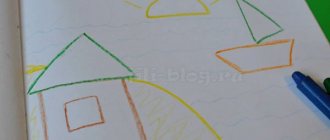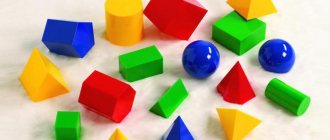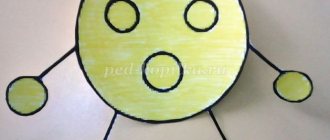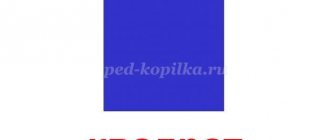Why study geometric shapes with your baby?
- Geometric shapes are found everywhere; they can be seen in most objects around us: a round ball, a rectangular table, etc. By analyzing the similarity of surrounding objects with geometric shapes, the child wonderfully trains associative and spatial thinking.
- Studying geometric shapes is useful for the overall development of the baby and expanding his knowledge about the world around him. If you introduce your child to shapes at an early age, he will have a much easier time at school.
- Many interesting educational games are based on the ability to distinguish geometric shapes. This includes construction, games with sorters, mosaics, math tablets, Dienesh blocks, etc. Therefore, studying forms at such an early age will contribute to the further successful development of the child.
So, games for learning and consolidating knowledge about geometric shapes :
We name geometric shapes always and everywhere
If you come across any figure while playing or reading books, be sure to draw your baby’s attention to it and name it (“Look, the ball looks like a circle, and the cube looks like a square”). Even if it seems to you that the child is unlikely to remember the names of the figures, say them anyway, and they will definitely be imprinted in his head. You can do this for up to a year. At first, point out only the basic shapes (square, circle, triangle), then, when you understand that the baby has mastered them, begin to study other shapes.
Rectangle
A rectangle is a parallelogram in which all angles are right.
Rectangle properties:
- The diagonals of a rectangle are equal and bisect at the point of intersection.
- Around a rectangle, you can describe a circle with a center at the point of intersection of its diagonals and a radius that is equal to half the diagonal.
find out the area of a rectangle :
- S = a × b, where a, b are the width and height of the rectangle.
- S = a × √(d2 - a2), where a is the known side, d is the diagonal.
A diagonal is a line segment that connects opposite vertices of a figure. It is present in all figures whose number of vertices is more than three. - S = 0.5 × d2 ×








